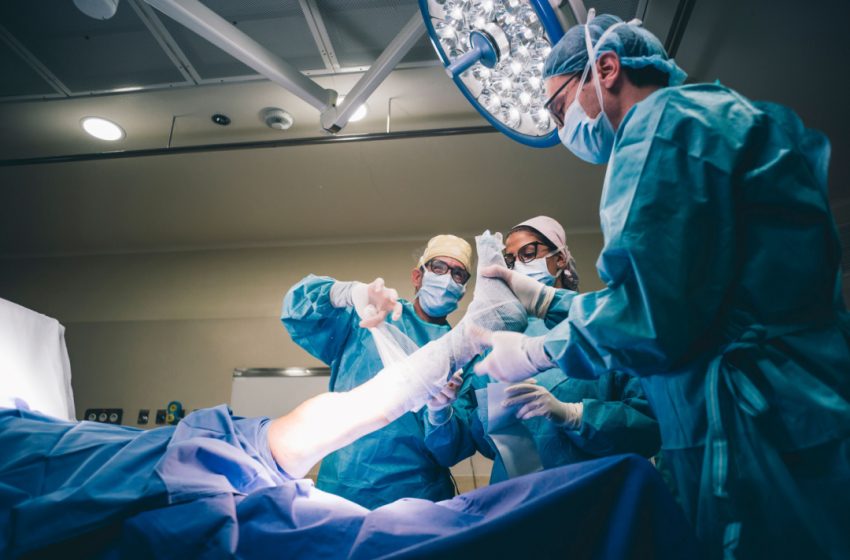The Latest Innovations in Orthopedic Surgery by Surgeons in Karachi

Orthopedic surgery has seen remarkable advancements in recent years, bringing new hope to patients suffering from bone, joint, and muscle conditions. In Karachi, home to a wide range of top-notch healthcare facilities and skilled surgeons, the field of orthopedic surgery is experiencing a wave of innovation. From minimally invasive techniques to cutting-edge technologies, these advancements are transforming the way orthopedic conditions are treated, offering faster recovery times, reduced pain, and improved outcomes.
In this blog, we’ll explore the latest innovations in orthopedic surgery that are being utilized by orthopedic surgeons in Karachi and how they benefit patients.
1. Minimally Invasive Surgery (MIS)
One of the most significant advancements in orthopedic surgery is the rise of minimally invasive techniques. Minimally invasive surgery involves smaller incisions compared to traditional open surgery, leading to faster recovery and less postoperative pain. Orthopedic surgeons in Karachi are increasingly adopting these techniques for various procedures, such as:
- Arthroscopy: A key technique for treating joint problems, such as torn ligaments or cartilage damage, arthroscopy involves inserting a small camera (arthroscope) into the joint to guide surgical instruments. This results in smaller scars and a quicker recovery.
- Minimally Invasive Spine Surgery: Surgeons use tiny incisions and specialized instruments to treat conditions like herniated discs, spinal stenosis, and scoliosis, reducing the risk of complications and allowing patients to return to normal activities sooner.
The benefits of minimally invasive surgery include reduced tissue damage, shorter hospital stays, and less pain, making it a popular choice for orthopedic patients.
2. Robotic-Assisted Surgery
Robotic-assisted surgery is a cutting-edge innovation that is revolutionizing orthopedic care worldwide, including in Karachi. This technology allows for greater precision and accuracy during surgery, particularly in joint replacements. In robotic-assisted procedures, surgeons use a robotic arm that helps guide the surgical tools with unparalleled precision.
- Knee and Hip Replacements: Robotic-assisted systems, such as the Mako robotic-arm, are used for partial or total knee replacements and hip replacements. These systems create a 3D model of the patient’s anatomy, allowing the surgeon to plan the procedure in detail and place the implant with exact precision.
The result is improved alignment, reduced complications, and better long-term outcomes for patients undergoing joint replacement surgeries.
3. 3D Printing for Custom Implants
3D printing technology is another innovation that is making a significant impact in orthopedic surgery. In Karachi, orthopedic surgeons are increasingly using 3D-printed implants for complex reconstructive surgeries, particularly in cases where traditional implants may not be the best fit for a patient’s anatomy.
- Personalized Implants: 3D printing allows for the creation of customized implants tailored to the exact specifications of the patient’s joint or bone structure. This ensures a better fit and function, reducing the risk of implant failure and improving overall results.
Additionally, 3D printing is used to create models of a patient’s anatomy, enabling surgeons to plan complex procedures with greater accuracy and predictability.
4. Stem Cell Therapy and Regenerative Medicine
Stem cell therapy is an innovative treatment that is gaining traction in orthopedic care in Karachi. This form of regenerative medicine involves using stem cells to repair damaged tissues, such as cartilage, tendons, and ligaments, without the need for invasive surgery.
- Treatment for Joint Degeneration: Stem cells can help regenerate damaged cartilage in joints affected by osteoarthritis, providing pain relief and improved mobility.
- Repairing Tendon and Ligament Injuries: Stem cell therapy is also being used to treat sports injuries, such as torn tendons or ligaments, by promoting tissue regeneration and speeding up recovery.
As a non-invasive or minimally invasive treatment, stem cell therapy offers a promising alternative for patients looking to avoid surgery or enhance the healing process after surgery.
5. Computer-Assisted Surgery (CAS)
Computer-assisted surgery (CAS) is a state-of-the-art technology that provides surgeons with real-time data and visualizations during surgery. This technology is particularly useful in complex procedures like joint replacements, spinal surgeries, and trauma surgery.
- Enhanced Accuracy: CAS systems help surgeons achieve greater precision in placing implants and aligning bones. This reduces the risk of misalignment and the need for revision surgeries in the future.
- Improved Outcomes: By providing real-time feedback and accurate measurements, CAS leads to better surgical outcomes and faster patient recovery.
In Karachi, many orthopedic surgeons are incorporating CAS into their practice, offering patients improved precision and care during complex orthopedic procedures.
6. Biologics and Advanced Grafts
Biologic treatments, including the use of growth factors, platelet-rich plasma (PRP), and advanced grafts, are being widely adopted in orthopedic surgery. These biologics are used to enhance healing, particularly in cases of tendon repair, bone grafting, and ligament reconstruction.
- Platelet-Rich Plasma (PRP): PRP therapy involves injecting a concentrated solution of the patient’s own platelets into an injured area to promote tissue healing and reduce inflammation. It’s commonly used in sports injuries, such as rotator cuff tears and Achilles tendonitis.
- Bone and Tissue Grafts: Surgeons use advanced grafting materials, such as synthetic bone grafts or donor tissues, to aid in the reconstruction of damaged bones and joints.
These biologics help speed up the healing process, reduce the risk of complications, and improve long-term recovery outcomes for orthopedic patients.
7. Outpatient and Same-Day Surgery
With advancements in surgical techniques and anesthesia, more orthopedic procedures are being performed as outpatient surgeries, meaning patients can go home the same day as the operation. In Karachi, many orthopedic surgeries, such as ACL repairs, arthroscopic procedures, and minor joint replacements, can be done on an outpatient basis.
- Shorter Hospital Stays: Outpatient surgeries reduce the time patients spend in the hospital, leading to lower costs and faster recovery in the comfort of their own homes.
- Less Invasive Procedures: The move toward minimally invasive surgery allows for quicker recovery and fewer complications, making same-day surgery an attractive option for many patients.
Conclusion
The landscape of orthopedic surgery in Karachi is rapidly evolving, thanks to innovative techniques and advanced technologies that are improving patient outcomes and revolutionizing the way surgeries are performed. From minimally invasive approaches to robotic-assisted surgeries, 3D printing, and regenerative medicine, these advancements are making orthopedic care more precise, less painful, and more efficient.
As a patient, staying informed about the latest surgical innovations can help you make better decisions about your treatment options. If you’re considering orthopedic surgery, consult with a qualified orthopedic surgeon in Karachi to explore these cutting-edge options and ensure you receive the best possible care for your condition.

